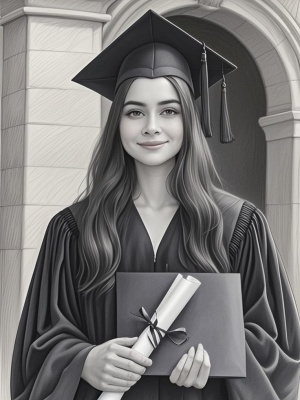The Art of Abstract Pencil Sketches: A Deep Dive into Expressive Drawing
Introduction
Abstract pencil sketches represent a fascinating intersection of simplicity and complexity in the art world. Unlike traditional representational drawings, abstract pencil sketches focus on conveying emotions, ideas, and concepts through non-representational forms and textures. This art form has gained significant popularity among contemporary artists and enthusiasts who appreciate its raw, unfiltered expression.
At MediaAI Art Gallery, we've noticed a growing interest in abstract pencil sketches, particularly among digital artists looking to incorporate traditional techniques into their work. The beauty of these sketches lies in their ability to transcend literal interpretation, inviting viewers to engage with the artwork on a more personal, emotional level.
The Essence of Abstract Pencil Sketches
Defining Abstract Pencil Art
Abstract pencil sketches are characterized by their departure from realistic representation. Artists working in this medium often focus on:
- Exploring form and texture rather than accurate depiction
- Using line quality to convey emotion and movement
- Creating compositions based on rhythm and balance rather than subject matter
- Experimenting with negative space as an active element
Materials and Techniques
The simplicity of materials belies the complexity of results achievable with abstract pencil sketches. Essential tools include:
- Graphite pencils ranging from 6H to 8B for varied tones
- Quality drawing paper with appropriate tooth
- Kneaded erasers for subtle highlights
- Blending stumps for smooth transitions
Many artists combine these traditional tools with digital techniques, as discussed in our AI Painting Guide, creating hybrid works that push the boundaries of abstract expression.
Creative Process and Problem-Solving
Common Challenges in Abstract Sketching
Artists often face specific challenges when creating abstract pencil sketches:
- Maintaining visual interest without recognizable subjects
- Creating balanced compositions from abstract elements
- Developing personal style while avoiding clichés
- Conveying intended emotions through abstract marks
Solutions and Approaches
Successful abstract pencil artists employ various strategies to overcome these challenges:

| Problem | Solution |
|---|---|
| Lack of focal point | Create contrast through value changes |
| Overworked areas | Use intentional negative space |
| Predictable compositions | Experiment with unconventional formats |
For more technical guidance, resources like the Tate Museum's guide to abstract art provide valuable historical context and examples.
Contemporary Applications
Abstract pencil sketches have found new life in various modern applications:
- Concept development for digital artworks
- Textural elements in mixed media pieces
- Preliminary studies for larger works
- Therapeutic art practices
At MediaAI Art Blog, we've explored how these traditional techniques inform digital creation processes, particularly in AI-assisted art generation.
Conclusion
Abstract pencil sketches remain a vital and evolving art form that bridges traditional drawing techniques with contemporary artistic expression. Their simplicity of materials combined with depth of potential makes them accessible to beginners yet endlessly challenging for experienced artists.
Whether used as standalone artworks or as part of a larger creative process, abstract pencil sketches offer unique opportunities for personal expression and technical exploration. For those interested in seeing how these techniques translate to digital formats, our gallery showcases numerous examples of this fascinating intersection between traditional and modern art forms.
